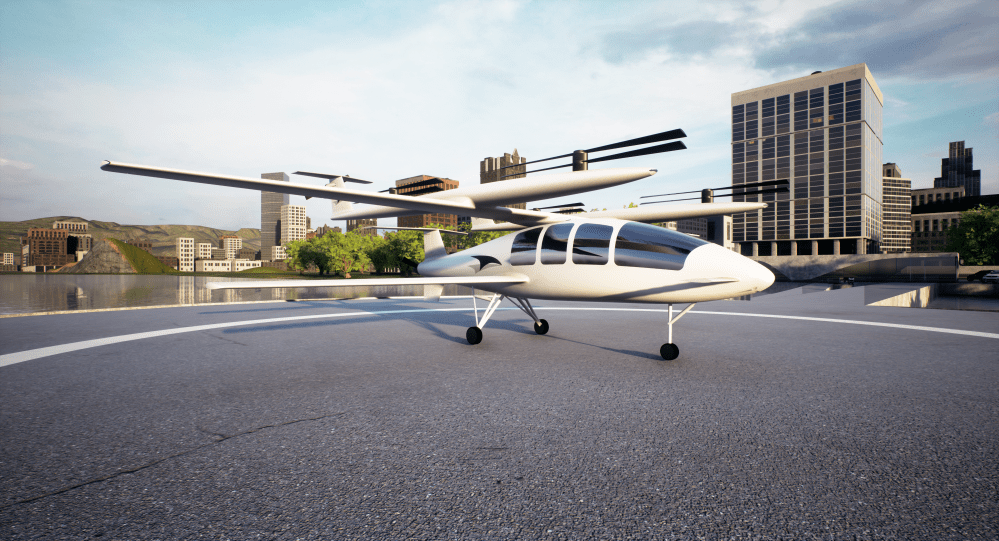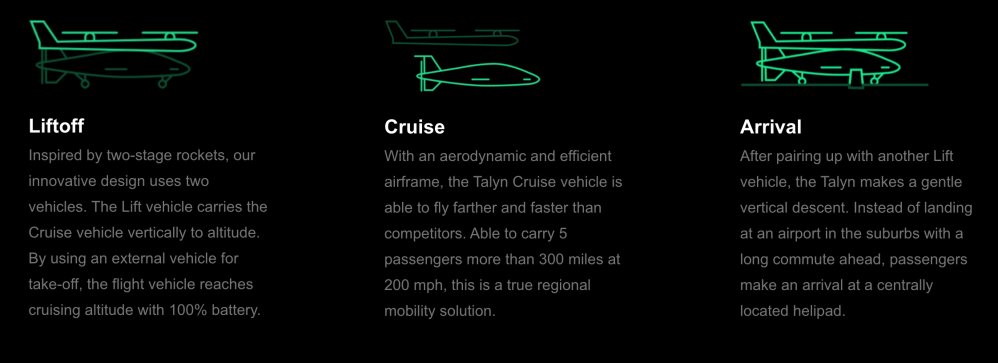
There’s a revolution under way when it comes to passenger-carrying aircraft. And there’s been a ton of buzz around Urban Air Mobility, generally focusing on aircraft like the EHang 216 autonomous drone. But there’s something new, and very intriguing, on the horizon.
Much of the buzz lately has been around Urban Air Mobility. That model envisions multi-rotor aircraft that can safely shuttle people and goods over an urban landscape while safely integrating with any low-flying manned aircraft. And undoubtedly, there will be a demand for such services, particularly in larger cities with congested ground traffic. Summon a ride with a phone app, hop in at a designated takeoff point, and the drone will safely whisk you to your destination.
But what if you want to go beyond city limits? What if, for example, you wanted to reach a city some 300 miles away? What if your destination didn’t even have an airport?
Talyn
Those are kinds of questions that Talyn aims to solve. And it aims to do so with a configuration that has significant advantages over existing fixed-wing VTOL designs.
VTOL, as you likely know, stands for Vertical Take Off and Landing. That’s the up and down part. But there are huge efficiency gains with an aerodynamic, fixed-wing design. In forward motion, those wings produce lift. And we don’t need a wind tunnel demo to understand that fixed-wing aircraft have far less drag than most multi-rotor designs.
And so a number of manufacturers have tried to create the best of both worlds, using a combination of a fixed-wing for forward flight and additional motors for vertical take-off and landing. Often this is a four plus one configuration: Four motors for vertical and one for forward flight. Those vertical motors shut down once fixed-wing mode is engaged. Or, in another variation, the motors or even the wings themselves rotate as we see in aircraft like the Osprey V22.
But tilting the rotors (or the wing) involves additional engineering challenges and usually much more weight. And turning off the VTOL motors for forward flight? That leaves your aircraft with additional weight and drag, which will significantly limit overall range.

Talyn has come up with something very different.
Two stages
Talyn is busy working on a concept that combines the best of both worlds: The efficiency of a sleek, single-engine electric aircraft with the versatility of an eVTOL. And how does it do that? Like this:
The advantages
Well, it’s pretty clear. Most of the aircraft in the Urban Air Mobility space are limited to a maximum of about 50 miles. Talyn’s planned aircraft has a maximum range of 300 miles. That means you’d be able to fly between cities – and without the hassle of going to the airport. Remember: With VTOL, no runways are required.
“The airport model is painful,” CEO and cofounder Jamie Gull tells DroneDJ. “Realistically, Los Angeles to San Francisco is less than an hour in the air. But that’s a three- or four-hour trip.” Being able to shave off travel to the airport, and evade the long lines and wait times, would be a huge advantage. Plus, this aircraft would be capable of landing in places that do not have an airport (assuming that lifting wing is waiting at the other end).
“You’ll save a ton of time,” he says. “You can also start going to places that just don’t have airports, period.”
Expertise
The company is working right now with small, scalable prototypes. But there’s a wealth of expertise at this startup. Both CEO Jamie Gull and cofounder and CTO Evan Mucasey used to work together at SpaceX, where both had roles on both the Falcon 9 and the Dragon crew spacecraft. Gull is an aerospace engineer and Mucasey a mechanical engineer; both are also private pilots.

Gull explains that conventional fixed-wing takeoff with an electric plane requires a huge spike of power. That translates to additional battery management and weight. Using a Lift vehicle means avoiding those power management challenges. And once the Lift vehicle reaches a speed faster than the Talyn Cruise vehicle’s stall, the payload can be released. As the Cruise vehicle approaches arrival, it again connects with a Lift vehicle that will bring the pair down vertically.
Gull didn’t want to share the timeline for when we’ll see these actually flying people, but he says development is well under way. There’s also been significant venture capital investment in the company already.
So how long do we have to wait? We don’t know. But Gull has promised us a flight when it’s ready – and we’re holding him to that.
FTC: We use income earning auto affiliate links. More.






Comments